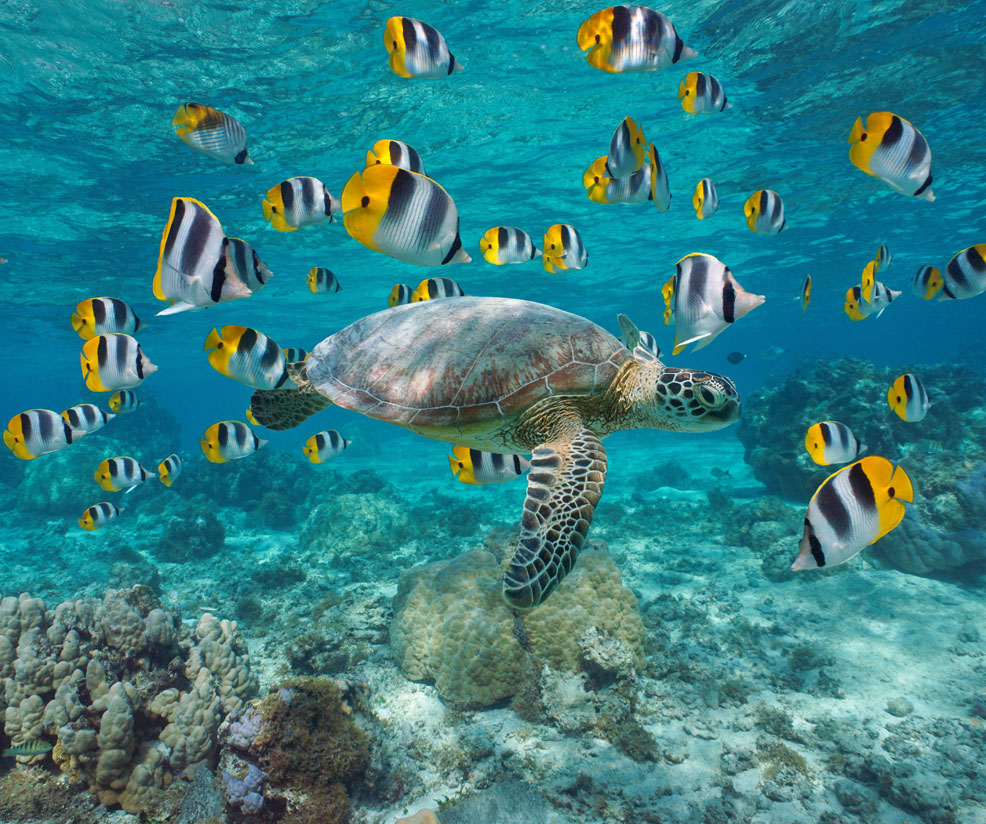
5th March 2023 Global agreement to protect oceans by 2030 UN member states have agreed on a legal framework for the High Seas Treaty, which aims to protect 30% of the world's oceans by 2030.
Earth's oceans cover an area of 361 million km2 (139 million miles2) and contain 1.4 billion km3 of water. As of today, less than 8% of this vast environment is officially protected, according to the International Union for Conservation of Nature (IUCN). However, that status could improve dramatically by 2030, thanks to a major new international agreement. The United Nations (UN) member states have been discussing a legally binding instrument on the world's oceans since 2002. After more than two decades of working groups, recommendations, and resolutions, they have finally achieved a consensus. The High Seas Treaty, agreed by UN negotiators yesterday, will provide a legal framework for establishing marine protected areas (MPAs) in biodiversity hotspots and sharing genetic resources across 30% of the world's oceans. In other words, quadrupling the existing zones, alongside more vigorous enforcement. This will include the establishment of a conference of the parties (COP), similar to that for climate change discussions, who meet periodically and enable signatory states to be held to account on the treaty's implementation. The text will now go through technical editing and translation, before officially being adopted at a subsequent session. At a time when marine life everywhere is facing existential threats – due to overfishing, pollution, plastic waste, invasive species and diseases, greenhouse gas emissions and other human-caused impacts – this new treaty is a major step forward for ocean protection. It also shows that multilateralism can still work in an increasingly divided world. "This is a historic day for conservation and a sign that in a divided world, protecting nature and people can triumph over geopolitics," said Dr. Laura Meller, campaigner for Greenpeace Nordic, speaking from New York. "We praise countries for seeking compromises, putting aside differences and delivering a Treaty that will let us protect the oceans, build our resilience to climate change and safeguard the lives and livelihoods of billions of people. "We can now finally move from talk, to real change at sea," she added. "Countries must formally adopt the Treaty, and ratify it as quickly as possible to bring it into force, and then deliver the fully protected ocean sanctuaries our planet needs. The clock is still ticking to deliver 30×30. We have half a decade left, and we can't be complacent." During these latest negotiations, a key point of contention between the North and South proved to be the issue of sufficient financing to fund the implementation of the Treaty, as well as equity issues surrounding the shared benefits of marine genetic resources. However, working right up to the final hours of the meeting, governments landed an agreement that provided for equitable sharing. China, the EU, US and UK showed willingness to compromise in brokering the final deal, while Small Island States showed leadership throughout the process. "The High Seas Treaty opens the path for humankind to finally provide protection to marine life across our one ocean," said Minna Epps, Director of the IUCN's Global Marine and Polar Programme. "Its adoption closes essential gaps in international law and offers a framework for governments to work together to protect global ocean heath, climate resilience, and the socioeconomic wellbeing and food security of billions of people." "This Treaty will be the game-changer the ocean urgently needs," said Fabienne McLellan, Managing Director of OceanCare. "We particularly welcome the conservation focused elements, such as environmental impact assessments. EIAs are one of the most effective and important mechanisms to prevent, mitigate, and manage harmful activities in cases where there is severe harm to marine life – through, for instance, underwater noise pollution. While we advocated for more ambition in the EIA provisions, these requirements will nevertheless strengthen ocean conservation." "This text provides the basis for protecting key biodiversity hotspots in the High Seas," said Lisa Speer, Director of the International Ocean program at the Natural Resources Defense Council (NRDC). "We now have a pathway to achieve the goal of meaningfully protecting at least 30% of the ocean by 2030, a goal that scientists tell us is crucial to maintaining ocean health in the face of ocean warming, acidification and other impacts of climate change. Now let's get started."
Comments »
If you enjoyed this article, please consider sharing it:
|







